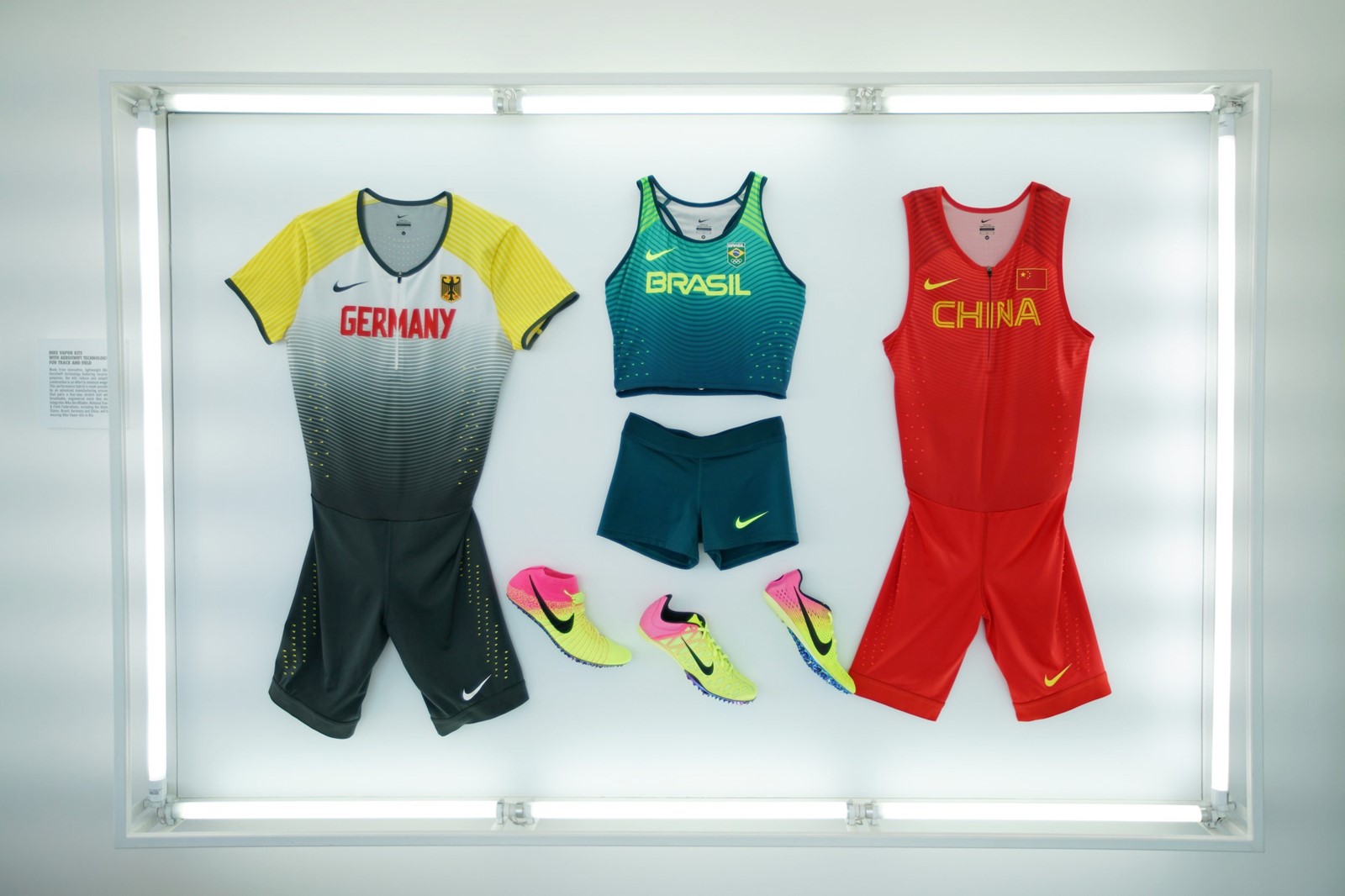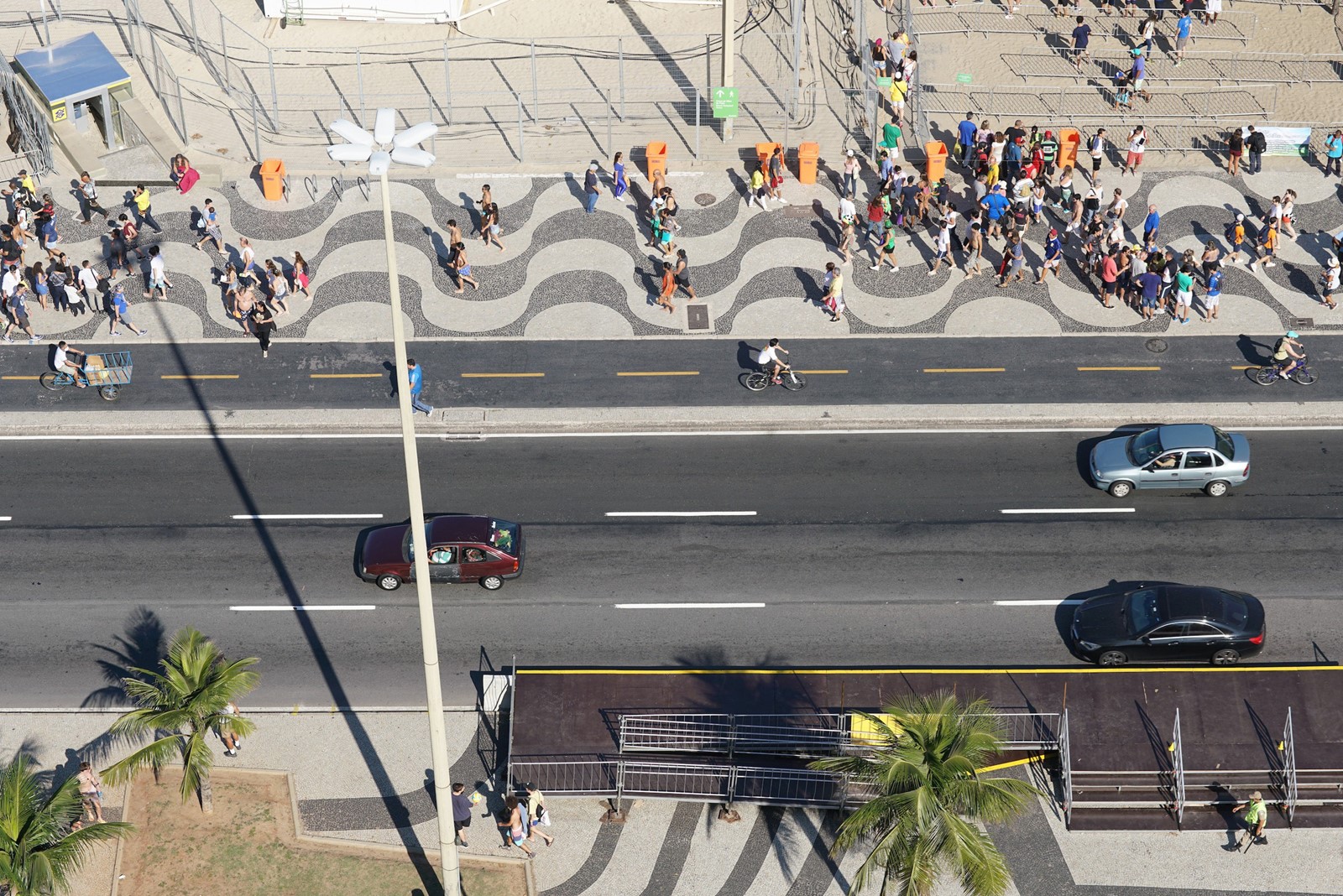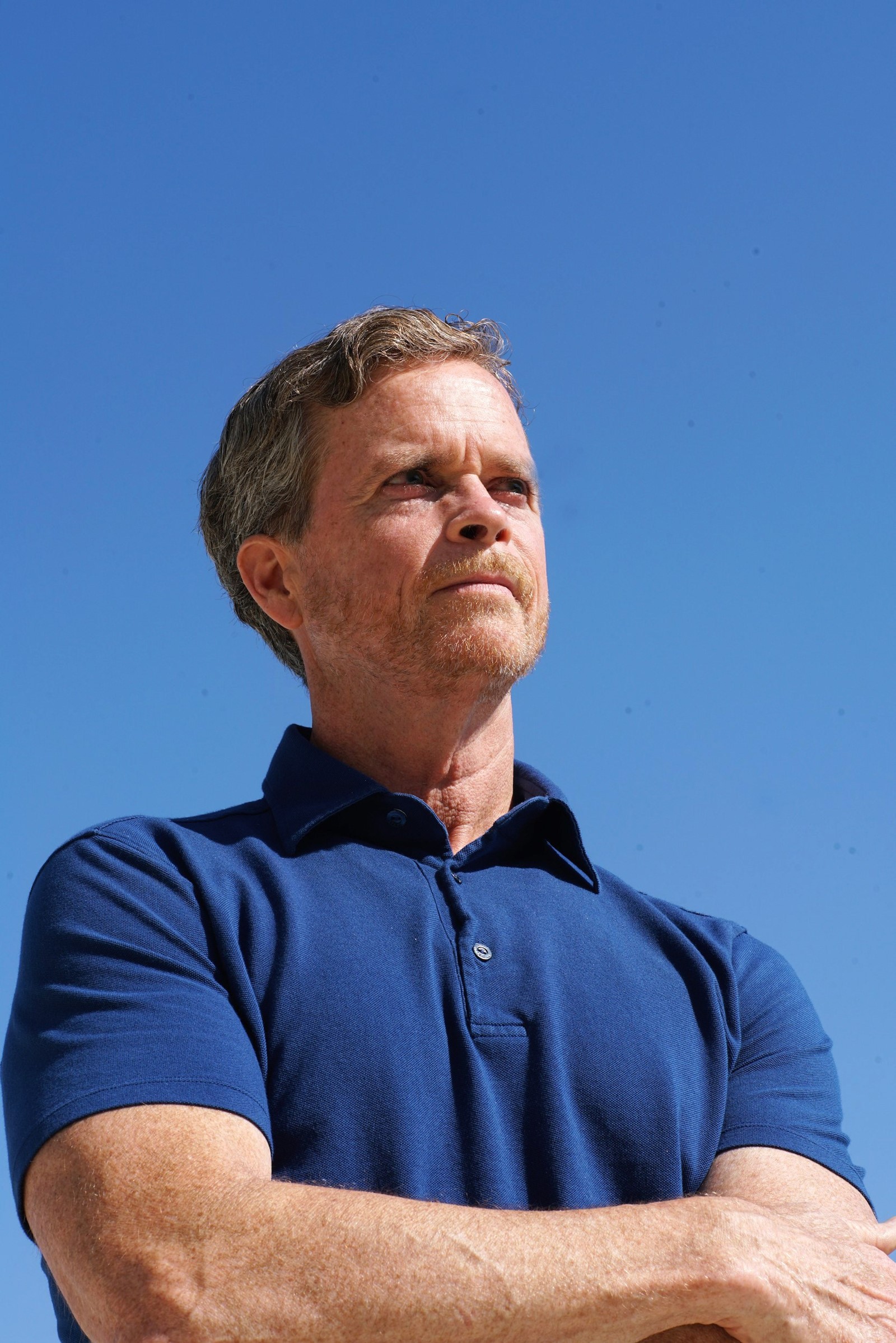It takes a truly insatiable creative appetite to find your way to the top at Nike, a company which has long been acclaimed for gnawing at the bit when it comes to innovation in design. In the case of Mark Parker, who this year celebrates his tenth anniversary as chief executive officer of the company (and his 37th, no less, as a designer there) his hunger for the new is as acute now as it ever was. By placing values accrued through his rigorous design training at the forefront of what the sportswear behemoth does, Parker has played a key part in revolutionising sportswear. In short, form follows function, and there is always potential for more change, more innovation.
On this he is resolute. “When I started at Nike as a designer I was always asked, ‘what more you can do with shoes that hasn’t already been done?’” he told AnOther, in a moment out from the action-packed Olympics Games in Rio de Janeiro this summer. We're sat in the cool, air-conditioned Nike headquarters, overlooking Copacabana beach and the noisy volleyball stadium situated there. “That was over 30 years ago, and I see more potential for change and innovation, meaningful innovation, today than I did then. It’s a case of asking, how do you get the best combination of performance, sustainability and aesthetic? This stuff is always changing, so there are more and more possibilities, and that’s always exciting.” Often, in fact, the company’s strongest ideas are put on hold while the technology necessary to execute them catches up, he tells me. “That’s okay, it’s part of being an innovator, but it also makes it fun because we’re constantly pushing. I like the fact that we can work with people in other fields to solve those problems.”

These innovations range from working directly with Olympic-level athletes to address shortfalls in their equipment – just this summer at Rio 2016, French pole vault silver medallist Renaud Lavillenie wore a brand new prototype shoe designed specifically to aid his unconventional technique – to creating new means of fabricating products which produce less waste. In fact, sustainability is key to what Nike does. Take the Flyknit, for example: first introduced in February 2012, its super lightweight, form-fitting upper broke new grounds in terms of breathability, fit and support – and, as it’s made from recycled threads, it creates on average 60% less waste than traditional cut-and-sewn footwear. “It’s very sustainable technology,” Parker explains. “We’re able to create a very high-performance product through a new process which has been advanced with new machinery and software, to create new possibilities in design.” Future-proofing the Flyknit has also led the team to think about the dyeing process – one of the most wasteful in the manufacturing process. “We’re asking, how we can dye fabrics without using water? There is so much waste in water, so we’re working with outside partners to eliminate it from the process. That’s only been made possible in the last 18 months or so.”
"We’re lifting up rocks to find new solutions to problems, and we’re looking in places that maybe many people aren’t looking" – Mark Parker
Nike’s endless pursuit of solutions has led the company to some unexpected places – not least of which is the global community of like-minded thinkers, creators and innovators called upon by its various teams to break new boundaries in design. “We’re lifting up rocks to find new solutions to problems, and we’re looking in places that maybe many people aren’t looking. Working with artists and designers, you get different points of view, and that cross-pollination of creativity to me is really rich. It creates a fertile place for new ideas to start."
Perhaps as a result, fans of Nike’s unparalleled creative process can be found across the world, from experts in ethical production, to the highest realms of haute couture. “I remember sitting down with Lee [Alexander] McQueen,” Parker tells me. “He was an avid sneaker collector! He had 300-and-some trainers in his collection, and I asked him, why do you like Nike so much? He said it was our purity and authenticity, the fact that we were pursuing performance, and he liked where that took us in terms of creating new forms and a new visual aesthetic.” An unexpected relationship, perhaps, but an interdependent one nonetheless. “Personally I was a huge fan of his work and his process, so it was an interesting blend.”

This eagerness to find inspiration in surprising places is one of the company’s core guiding principles, he tells me. “We have a saying at Nike – ‘be a sponge’. Take in everything around you, and find inspiration in anything, from the texture of that table, or the colour of the sunset, to the chromatic effect of the surface of a beetle’s shell. It’s endless. We’re looking at the big world, but we’re also looking at it microscopically, and we’re finding really interesting blends of all of that."
"We have a saying at Nike – ‘be a sponge’" Mark Parker
This multifaceted outlook has led Parker to amass an ever-growing art collection – although, as he is quick to assure me, this is not so much for the sake of owning pieces as it is to grow the Nike network. “It’s a bit of a soft spot I have,” he says. “I’m drawn to talented, creative people who often just don't know how to support themselves – they’re more focused on their work than trying to figure that out. So I commission a lot of works with artists who I like, personally or professionally, and through that process I wound up collecting a lot of art. I make it available for museums and exhibitions or whatever. It’s not about amassing a big collection of art so much," he adds, hastily, “it’s more about supporting a community of creative people.” As a result, his office has come to resemble something of a grotto of stimulation, I’m told – a treasure trove of stuff of Paul Smith proportions. These references emerge everywhere, one of his close associates tells me, mentioning one example in which the outline of an antique lamp seemed to crop up in the pattern of studs on the sole of a shoe. “I’m very visual, so I surround myself with visual things. I’m not a minimalist. I’ve always been that way. I probably draw more than I write words.”
As for the best piece of advice he’s ever received? It came, unexpectedly, from a family member. “I’ve gotten lots of great advice from lots of people that I admire,” he explains, “but the person who influenced me more than anyone in my life was my grandmother. She taught me how to observe, how to look around. When I was really little she would take me out walking in the woods, and whatnot, and she would point to details of things, she knew everything. The ability to really look beyond the surface, that was a gift that I was given at a young age. I still find myself seeing things that a lot of people don’t notice, not because I’m…” he falters slightly, humility knocking him from his train of thought. “I just work a little bit more intensely at things.”
With thanks to Nike.
